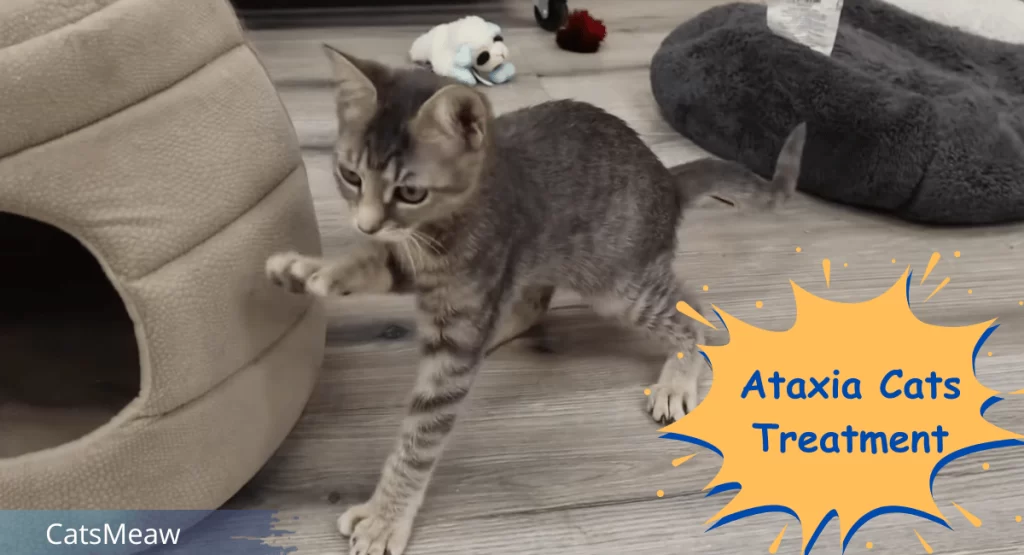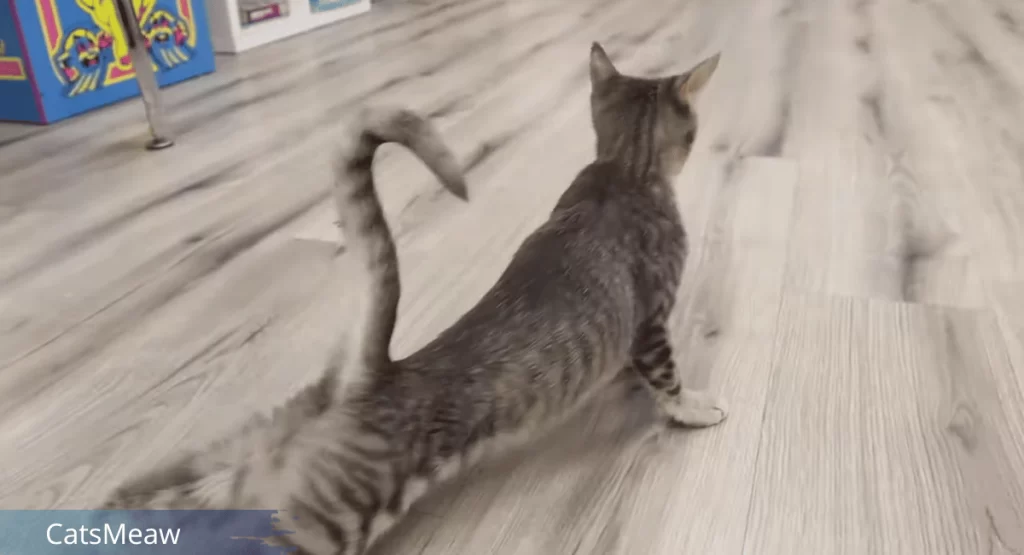Ataxia is a condition that affects a cat’s coordination and balance. It can be caused by various underlying factors, such as neurological disorders, infections, or trauma. When a cat has ataxia, it may have difficulty walking, jumping, or even standing still. This may badly impact their quality of life and overall their well-being. In this article, we shed light on the intricacies of ataxia in cats, unraveling its causes and best treatment.

Table of Contents
Common Causes of Ataxia in Cats
There are several causes of ataxia in cats including cerebellar hypoplasia, a condition where the cerebellum, the main part of the brain responsible for coordination, does not develop properly. This almost occur due to infections during pregnancy or genetic factors.
Another common cause is vestibular disease, which affects the inner ear and disrupts a cat’s sense of balance. Infections, tumors, or injuries to the head can lead to vestibular disease. Additionally, certain toxins, such as lead or antifreeze, can cause ataxia in cats if ingested.
Symptoms and Diagnosis of Ataxia in Cats
The symptoms of ataxia in cats can vary depending on the underlying cause. Some common signs include unsteady gait, stumbling or falling, head tilting, and difficulty controlling movements. Cats may also show signs of dizziness, such as rapid eye movements or a loss of balance.
To diagnose ataxia, a veterinarian will perform a thorough physical examination, review the cat’s medical history, and may conduct additional tests, such as blood work, X-rays, or an MRI. Identifying the underlying cause is crucial for determining the most effective treatment options.
Treatment Options for Ataxia in Cats
Treating ataxia in cats often involves addressing the underlying cause of the condition. If the ataxia is due to cerebellar hypoplasia, there is no specific cure, but supportive care can help improve the cat’s quality of life. Cats with sudden non-progressive, disturbance in balance may require medication to manage the symptoms and treat any underlying infections or injuries.
Our pick: The Best Interactive Toys for Cats
Medication and Supplements for Ataxia in Cats
In some cases, medication may be prescribed to help manage the symptoms of ataxia. Anti-inflammatory drugs, muscle relaxants, or anticonvulsants may be used to alleviate pain, reduce inflammation, and control seizures if present. Additionally, supplements such as omega-3 fatty acids or antioxidants can support brain health and improve overall neurological function.
Physical Therapy and Rehabilitation for Ataxic Cats
Physical therapy and rehabilitation can play a significant role in helping ataxic cats regain their mobility and improve their coordination. This may include exercises to strengthen muscles, improve balance, and enhance proprioception. Rehabilitation techniques, such as hydrotherapy or laser therapy, can also aid in the recovery process.
Related: The 10 Most Common Cat Diseases

Diet and Nutrition for Cats with Ataxia
Proper nutrition is crucial for cats with ataxia to support their overall health and well-being. A balanced diet that provides essential nutrients, vitamins, and minerals is essential. Omega-3 fatty acids, found in fish oil or specialized cat food, can help reduce inflammation and support brain health. Consult with your veterinarian to determine the best diet for your ataxic cat.
Home Care Tips for Managing Ataxia in Cats
Caring for an ataxic cat at home requires some adjustments to ensure their safety and comfort. Provide a stable environment with easy access to food, water, and litter boxes. Use non-slip surfaces or place rugs to prevent slips and falls. Regular veterinary check-ups and monitoring of your cat’s condition are also essential to identify any changes or complications.
Supportive Care and Measures for Ataxic Cats
In addition to medical treatment, there are supportive measures that can enhance the quality of life for ataxic cats. These include providing a quiet and stress-free environment, offering physical and mental stimulation, and engaging in interactive play sessions using specific toys. Regular grooming and maintaining proper hygiene are also important to prevent any discomfort or complications.
Related: Diabetes in Cats: Symptoms and Best Treatments
Conclusion: Ensuring a Better Quality of Life for Cats with Ataxia
Ataxia in cats can be a challenging condition, but with the right treatment and care, you can ensure a better quality of life for your beloved feline companion. Understanding the underlying causes, seeking veterinary guidance, and implementing appropriate treatment options will help manage the symptoms and improve your cat’s coordination and overall well-being. Remember, patience, love, and a supportive environment are key to helping your ataxic cat thrive.
